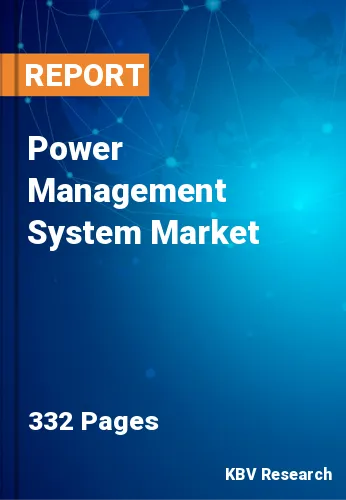The Global Power Management System Market size is expected to reach $8.1 billion by 2030, rising at a market growth of 5.2% CAGR during the forecast period.
Power management systems assist end users, like data centers, in lowering their energy usage and operating expenses. Hence, the Data center segment generated $428.7 million revenue in the market in 2022. Due to its energy-saving attributes, power management systems are becoming increasingly prevalent. Data centers often have a mix of workloads with varying resource requirements. Power management systems help in dynamically distributing workloads across available servers and resources. This load balancing ensures that no server is overburdened while others are underutilized, leading to more efficient power usage and better resource utilization. As a result, there is a huge rise in demand for these systems in data centers.
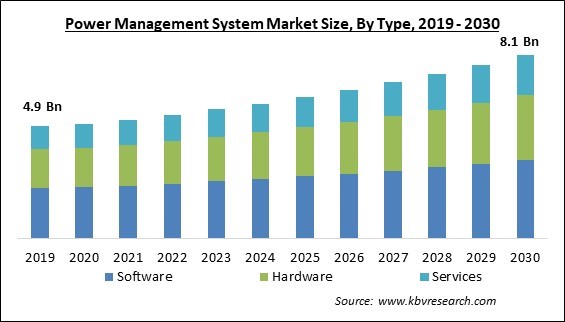
The major strategies followed by the market participants are Acquisitions as the key developmental strategy in order to keep pace with the changing demands of end users. For instance, In December, 2021, GE Digital acquired Opus One Solutions Energy to integrate the renewable energy planning capabilities of Opus One into its network management and optimization offerings to aid utilities in making decisions on the integrations of Distributed and Renewable Energy Resources at scale across the electric grid. In October, 2022, ABB took over ASKI Industrie Elektronik GmbH to broadens ABB's digital energy management offerings and boosts the development of ABB’s ecosystem of digital energy services.
Based on the Analysis presented in the KBV Cardinal matrix; Siemens AG and Honeywell International, Inc. are the forerunners in the Market. In December, 2021, Siemens Smart Infrastructure acquired EcoDomus to support Siemens Smart Infrastructure broadening its digital building suite. Companies such as ABB Group, Eaton Corporation PLC, Schneider Electric SE, and Emerson Electric Co. are some of the key innovators in the Market.
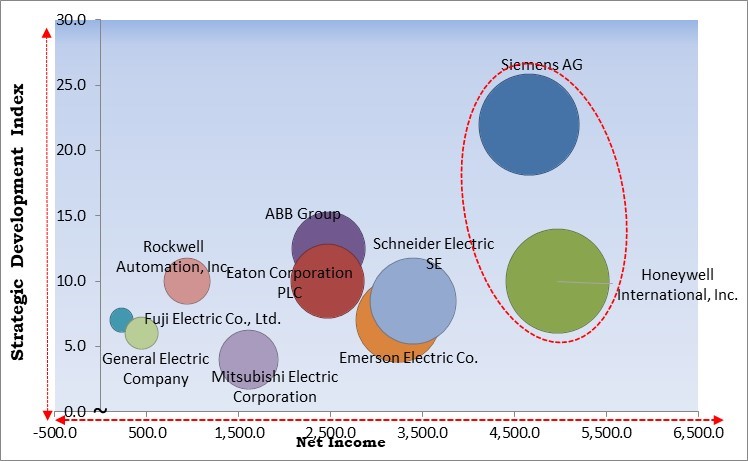
The pattern of consumption of energy is shifting in modern businesses. Energy costs and environmental issues are fundamental components of the approach used by major businesses. The power management system monitors and regulates power production to ensure that power networks operate effectively. Additionally, it reorganizes generation, imports, and loading such that every generator, reactor, transformer, and tie line operates within predetermined parameters. Key market drivers include fluctuating electric power prices, tight government rules and policies, various incentives, and the growing use of PMS in building automation. Therefore, the rising demand for energy efficient systems is propelling the growth of the market.
With the introduction of distributed energy resources and new alternatives for power generation, power systems are becoming less centralized. Numerous issues, including poor power quality, planned rolling blackouts, unforeseen utility power outages, and an increase in power prices, are driving up demand for energy from distributed energy resources. Industrial end users have begun producing electricity via distributed generation sources to meet peak loads from unconventional energy sources. It reduces energy costs for companies and in addition to resolvings environmental worries. These elements will cause the market to grow throughout the ensuing years.
Malicious viruses can steal sensitive data from power management computer systems, which can cause enormous losses for industries. The prolonged reading duration and the high initial investment cost rate may limit market growth. Both regional manufacturers and SMEs may suffer from this. Industrial automation users and vendors are increasingly concerned about cybersecurity since there have been more cyberattacks on vital infrastructure over the past ten years. As a result, the market may suffer due to the data security issues associated with power management systems.
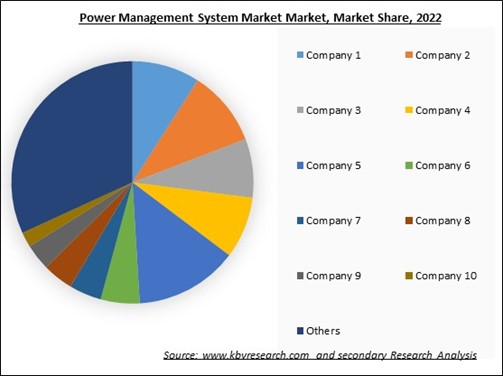
The leading players in the market are competing with diverse innovative offerings to remain competitive in the market. The above illustration shows the percentage of revenue shared by some of the leading companies in the market. The leading players of the market are adopting various strategies in order to cater demand coming from the different industries. The key developmental strategies in the market are Acquisitions.
By module, the market is classified into power monitoring & control, load shedding & management, energy cost accounting, switching & safety management, power simulator, generator controls, data historian, and others. In 2022, the power monitoring and control segment dominated the market with the maximum revenue share. A crucial part of a PMS is the power monitoring and control module, which devotes itself to real-time monitoring, analysis, and control of electrical power parameters in a specific system or facility. This module is essential for guaranteeing effective power distribution, maximizing energy utilization, and preserving the dependability and stability of the system. These advantages are driving the growth of the segment.
Based on industry, the market is fragmented into oil & gas, marine, chemical & petrochemical, paper & pulp, metal & mining, utilities, data center, and others. In 2022, the oil and gas segment registered the highest revenue share in the market. Oil and gas operations often require continuous and reliable power to avoid disruptions. Power management systems ensure that critical equipment and processes have access to redundant power sources, minimizing downtime and production losses. Additionally, this industry is subject to strict regulatory standards. Power management systems assist in meeting compliance requirements by providing accurate energy consumption data for reporting and audit purposes.
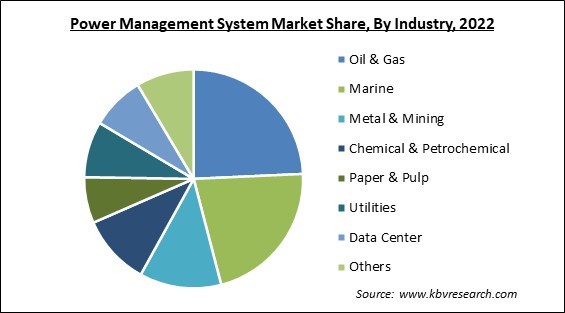
On the basis of type, the market is segmented into hardware, software, and services. The hardware segment garnered a significant revenue share in the market in 2022. The power management system's hardware components efficiently distribute, control, and monitor electrical power. Electrical factors, including voltage, current, power factor, and energy consumption, can all be measured by power meters. These offer the most recent data on energy usage, enabling precise tracking and analysis of consumption patterns.
| Report Attribute | Details |
|---|---|
| Market size value in 2022 | USD 5.4 Billion |
| Market size forecast in 2030 | USD 8.1 Billion |
| Base Year | 2022 |
| Historical Period | 2019 to 2021 |
| Forecast Period | 2023 to 2030 |
| Revenue Growth Rate | CAGR of 5.2% from 2023 to 2030 |
| Number of Pages | 332 |
| Number of Table | 444 |
| Report coverage | Market Trends, Revenue Estimation and Forecast, Segmentation Analysis, Regional and Country Breakdown, Competitive Landscape, Market Share Analysis, Companies Strategic Developments, Company Profiling |
| Segments covered | Type, Module, Industry, Region |
| Country scope | US, Canada, Mexico, Germany, UK, France, Russia, Spain, Italy, China, Japan, India, South Korea, Singapore, Malaysia, Brazil, Argentina, UAE, Saudi Arabia, South Africa, Nigeria |
| Growth Drivers |
|
| Restraints |
|
Region-wise, the market is analysed across North America, Europe, Asia Pacific, and LAMEA. In 2022, the North America region witnessed the largest revenue share in the market. Many industries in North America are utilizing IoT and cloud-based systems for operational purposes. These end-user sectors' growing demand for energy-efficient technologies is contributing to an increase in the power management system. The EIA's Short-Term Energy Outlook predicts that 597 million short tons of coal were used by power plants in 2022, a 3% reduction from coal consumption in 2021. This decrease in consumption can be mostly due to shortages of supplies, such as issues with rail transportation and a limited coal supply.
Free Valuable Insights: Global Power Management System Market size to reach USD 8.1 Billion by 2030
The market research report covers the analysis of key stakeholders of the market. Key companies profiled in the report include ABB Group, General Electric Company, Siemens AG, Eaton Corporation PLC, Schneider Electric SE, Emerson Electric Co., Mitsubishi Electric Corporation, Rockwell Automation, Inc., Honeywell International, Inc., and Fuji Electric Co., Ltd.
By Module
By Type
By Industry
By Geography
This Market size is expected to reach $8.1 billion by 2030.
Demand for energy efficiency is rising are driving the Market in coming years, however, Data Security Risks Associated with PMS Solutions restraints the growth of the Market.
ABB Group, General Electric Company, Siemens AG, Eaton Corporation PLC, Schneider Electric SE, Emerson Electric Co., Mitsubishi Electric Corporation, Rockwell Automation, Inc., Honeywell International, Inc., and Fuji Electric Co., Ltd.
The expected CAGR of this Market is 5.2% from 2023 to 2030.
The Software segment is leading the Market by Type in 2022; thereby, achieving a market value of $3.5 billion by 2030.
The North America region dominated the Market by Region in 2022 and would continue to be a dominant market till 2030; thereby, achieving a market value of $2.8 billion by 2030.
Our team of dedicated experts can provide you with attractive expansion opportunities for your business.
